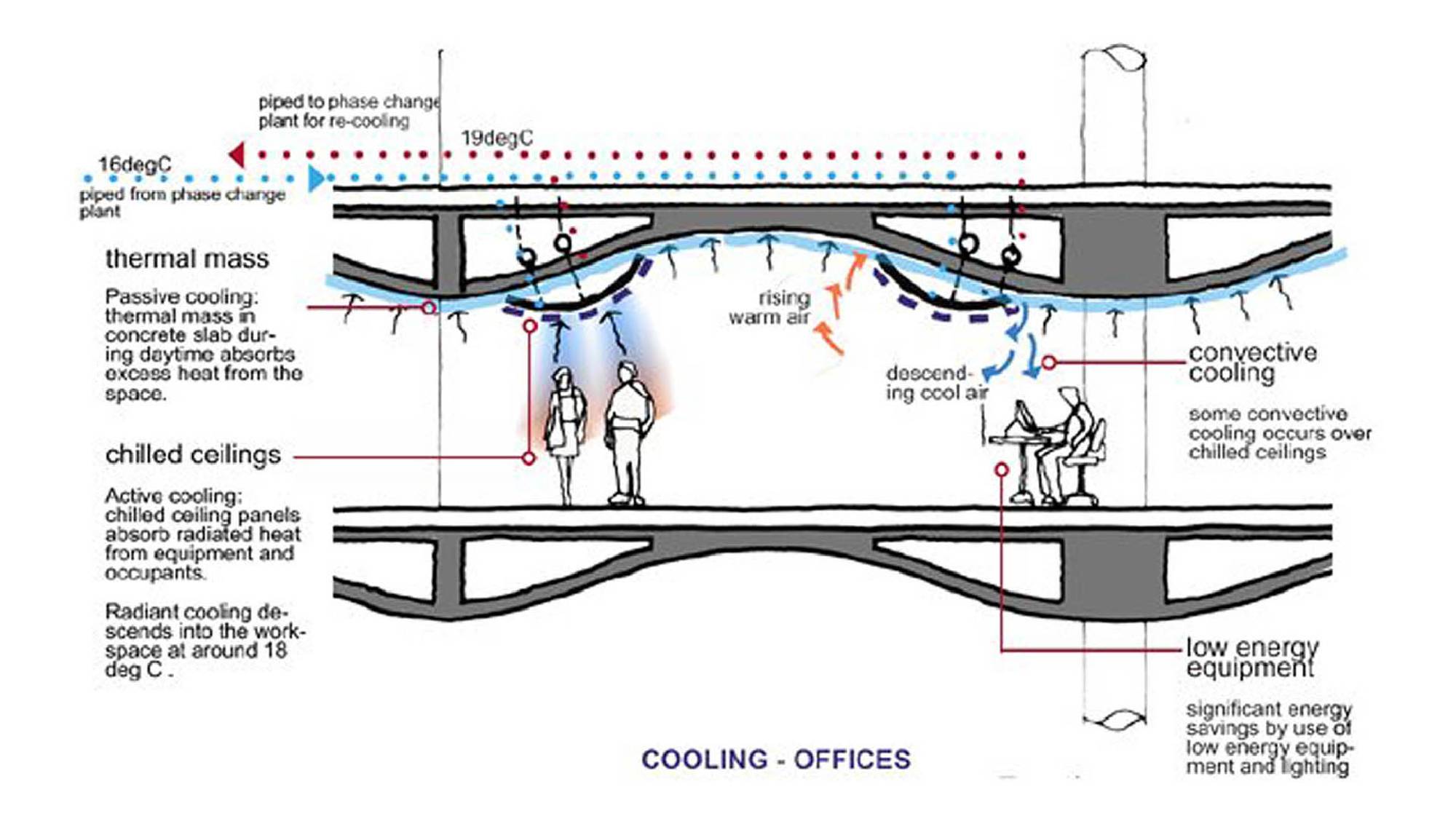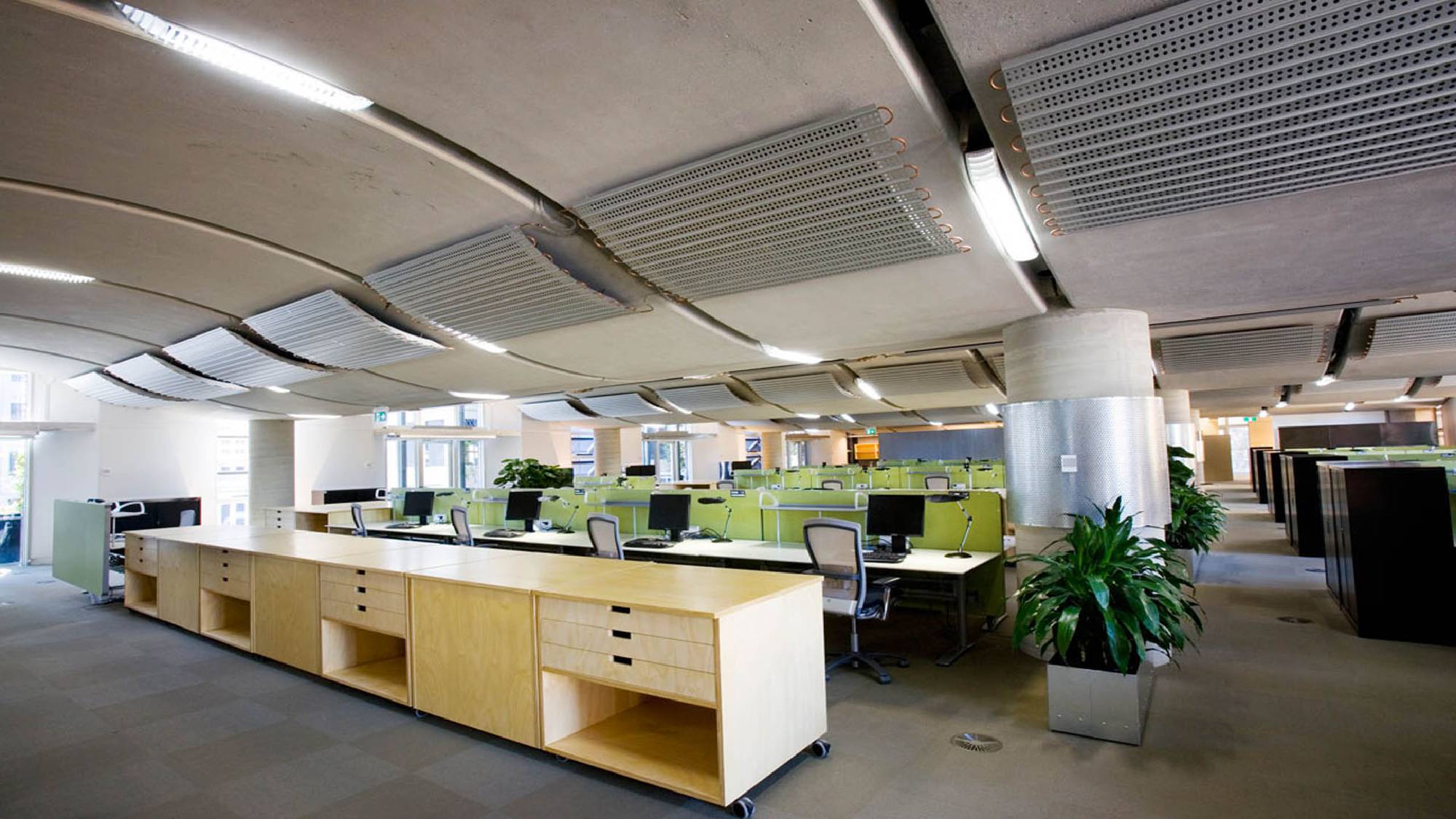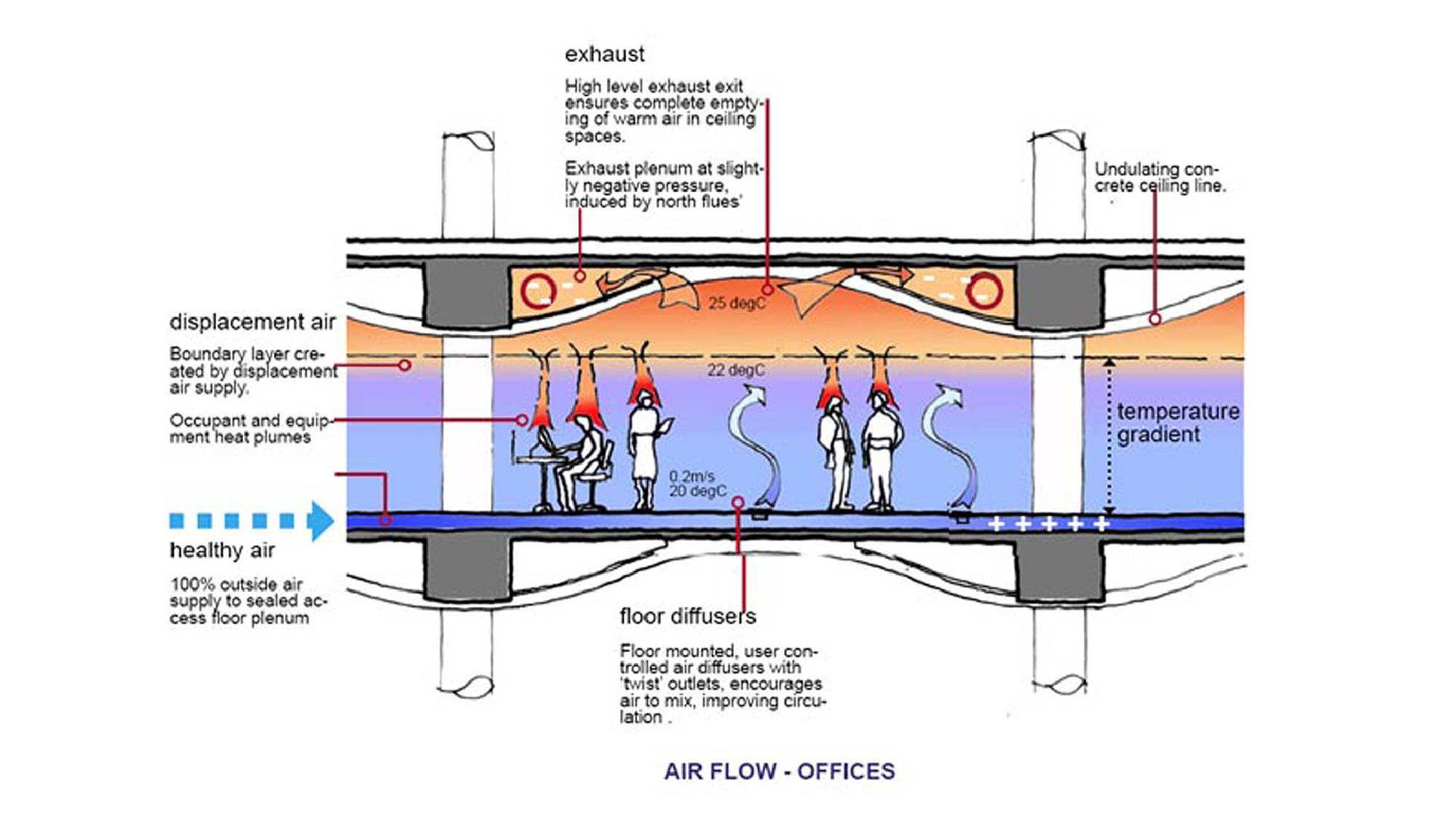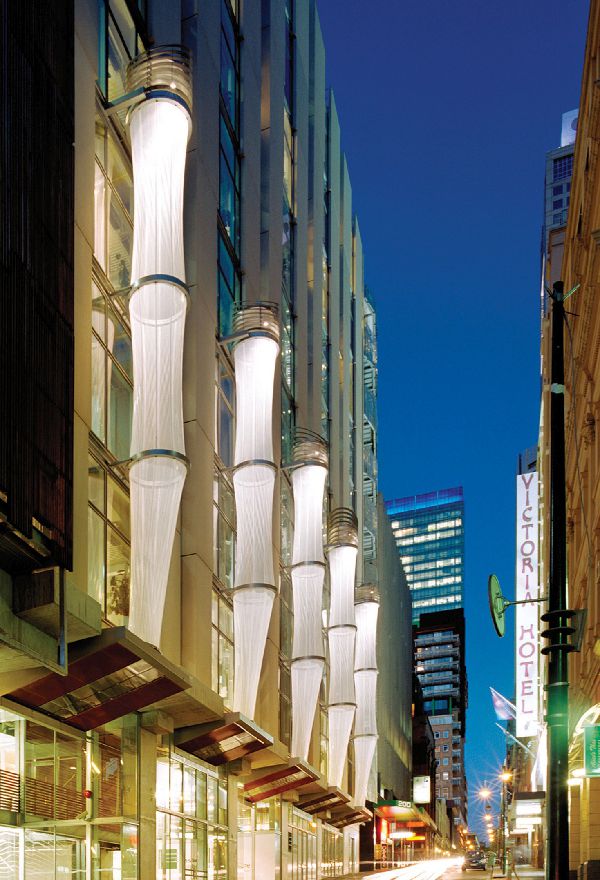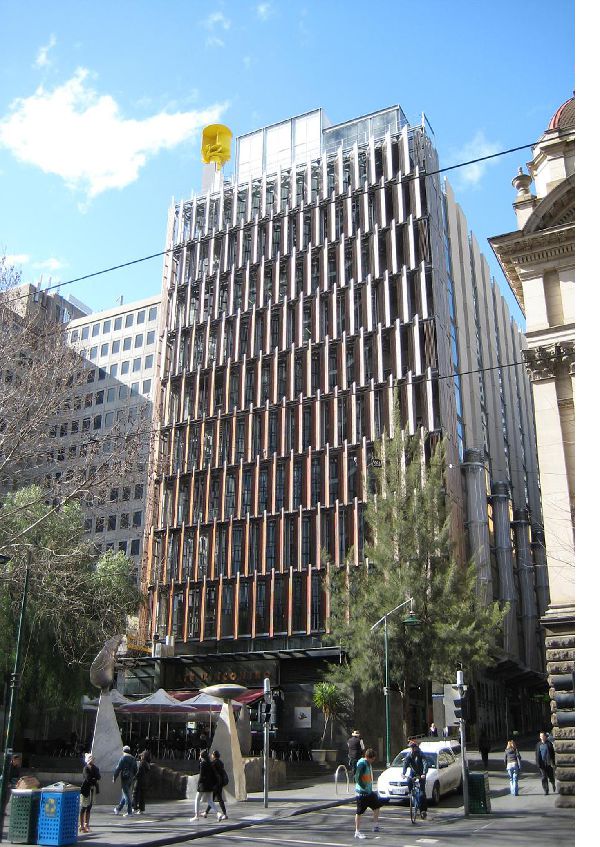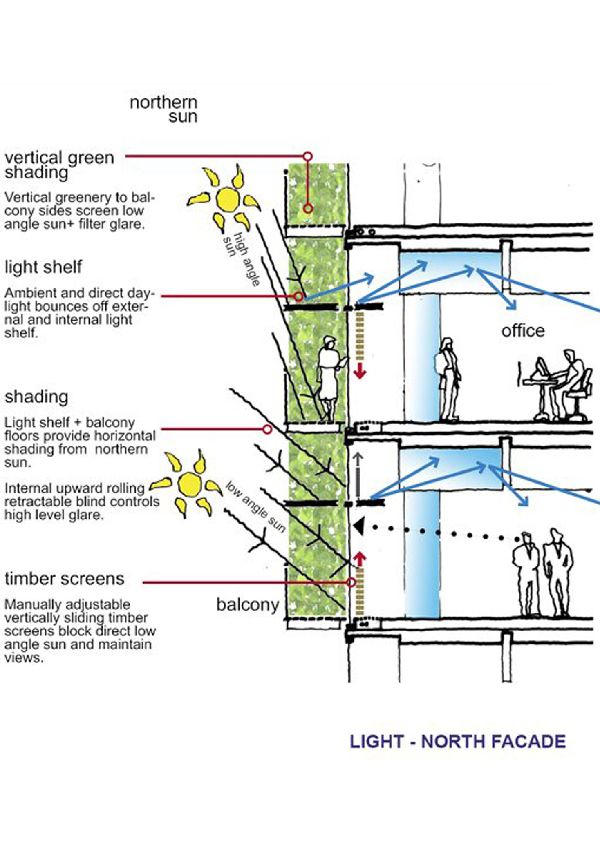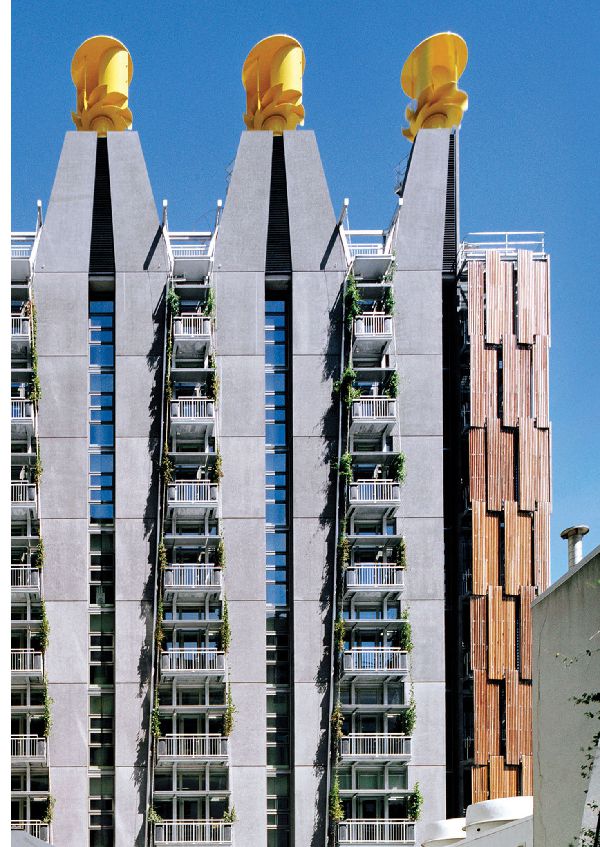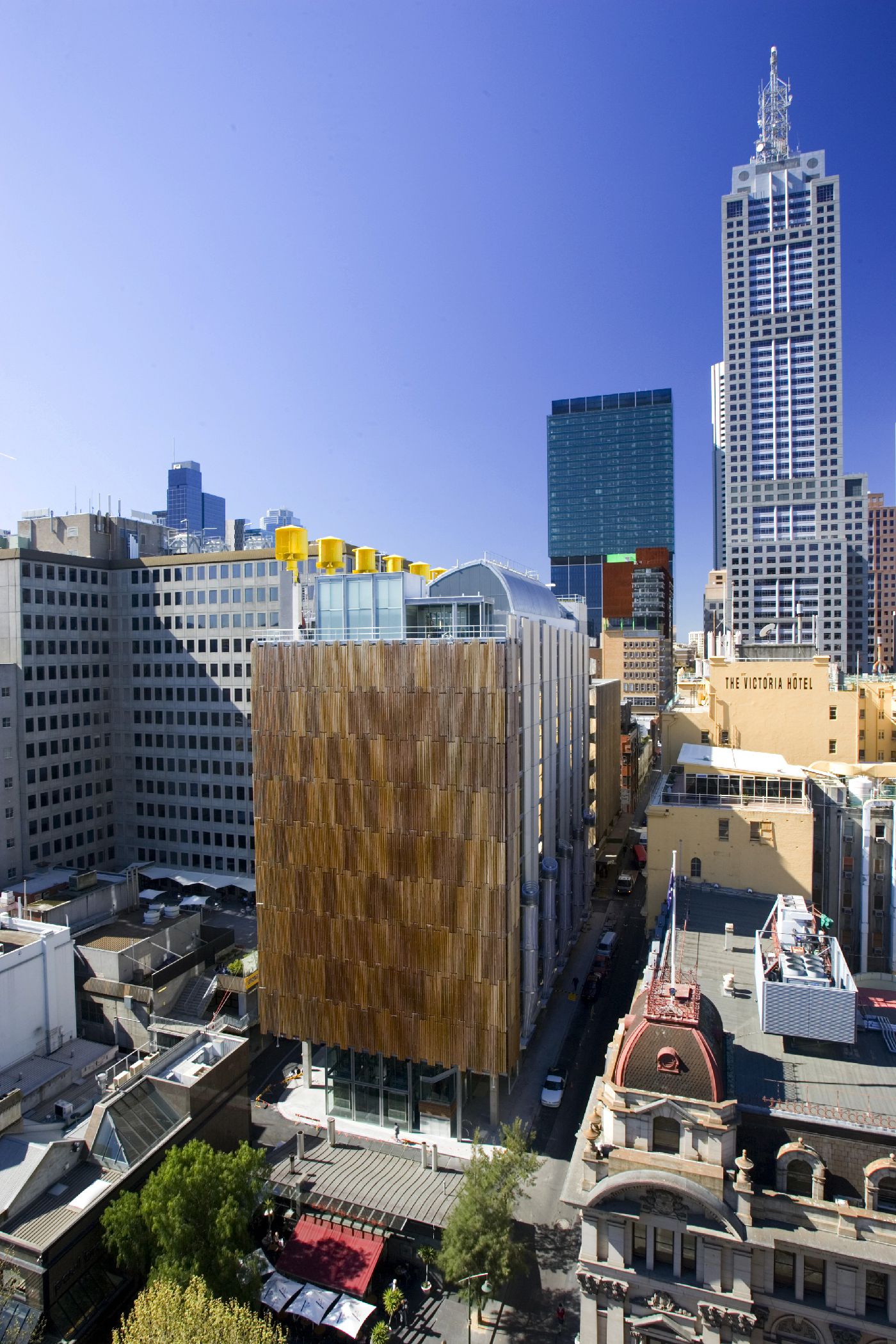
Council House 2, an administrative building for the City of Melbourne, is the first in the country to achieve the highest possible rating of six stars in Australia’s Green Star environmental accreditation.
Every aspect of the building has been examined and rethought from first principles, evolving new precepts that are based in the desire to be as true as possible to the fundamental “laws of nature”. The design philosophy is concerned with developing appropriate architectural responses that are a direct and honest expression of the biodynamic relationships that nature uses in her own designs.
This has implications for the building’s architectural form and for all the very sophisticated engineering within it. The composition of this building – its skin, its bones, its very innards – has been subjected to rigorous reappraisal to attune it to natural processes. This acknowledges the reality that we, as a society, must develop more sustainable structures to live and work in, if we are to survive as a species
CH2’s public face is the tall facade overlooking Swanston Street, one of Melbourne’s public boulevards. It is entirely composed of timber vertical slats covering a fully glazed wall. These slats pivot vertically, opening and closing in response to the time of day and the angle of the sun.
The facade is thus animated in direct response to the external conditions. This is biomimicry at its very best – the building moving and becoming alive in response to the conditions surrounding it.
The building’s crown houses another element that aptly announces the design philosophy. Six huge, bright yellow wind turbines are a fitting visual tribute to the way air moves around CH2’s interior, proclaiming way this building harnesses another powerful natural resource, wind.

